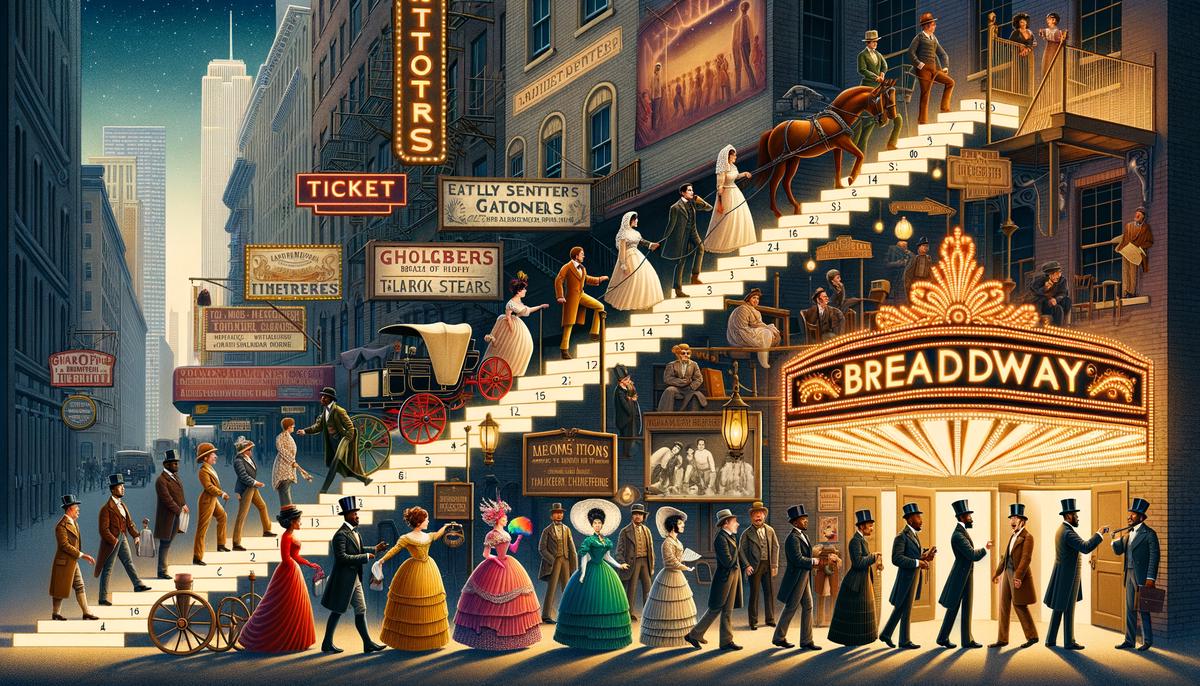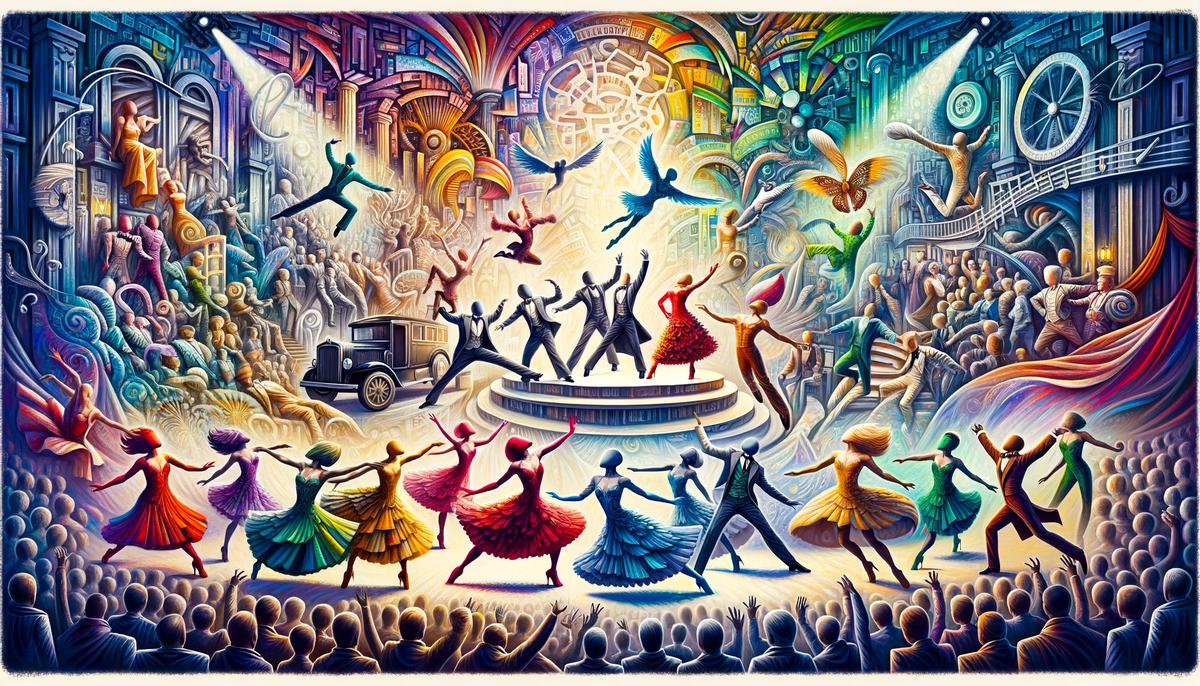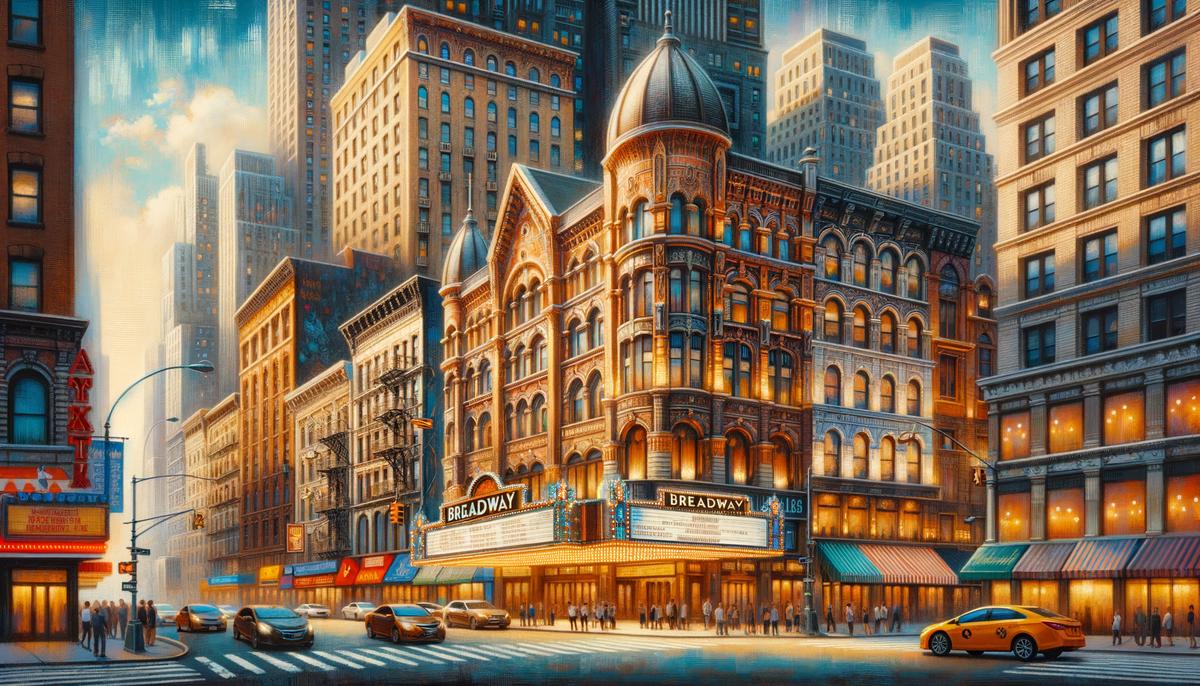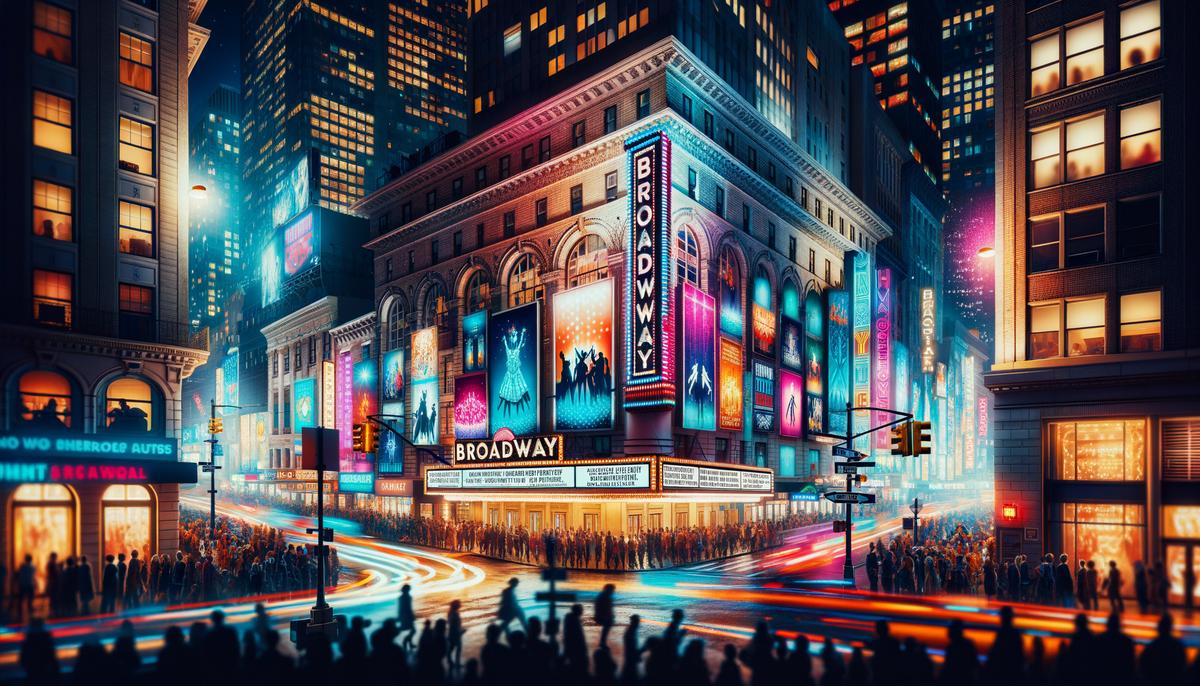Historical Evolution
Broadway began as a simple byway for Dutch settlers in the 17th century and transformed into the birthplace of American theater. In the early 1900s, George M. Cohan, an Irish American, helped bring Broadway into the limelight with his catchy tunes and patriotic speeches. This era marked the early stages of Broadway's potential, blending storytelling with music in a way that captured the essence of the American spirit.
Immigrants played a pivotal role in shaping Broadway. Jewish composers like Irving Berlin and vaudeville acts brought over by European immigrants combined to define a new, uniquely American form of theater. These diverse influences infused Broadway with creativity that captivated audiences, blending drama, music, and dance into cohesive narratives.
The Jazz Age of the 1920s brought an influx of African American talent to Broadway, injecting the vitality of jazz into its proceedings. Shows like "Shuffle Along" broke racial barriers, showcasing African American performers and writers in a predominantly white industry.1 This movement broadened Broadway's musical palette and began subtly pushing societal boundaries through the power of performance.
World War II saw a temporary downturn in Broadway's fortunes as resources and audiences dwindled. However, the post-war period marked a renaissance, with "Oklahoma!" in 1943 setting a new standard for integration between book and musical score. This Rodgers and Hammerstein masterpiece heralded the Golden Age of Broadway, featuring iconic productions that are still celebrated today.2
The 1960s and 70s saw Broadway reflecting the turmoil and changes in American society. Rock music, civil rights, and the Vietnam War influenced shows like "Hair," which challenged conventions both in form and content, embracing themes of peace, love, and social justice in a new way for Broadway.
Technological advancements have also revolutionized Broadway productions, making spectacles that were unimaginable a century ago possible. Elaborate set pieces, advanced sound systems, and lighting have elevated the sensory experience of Broadway shows, enhancing each production.
Modern shows like "Hamilton" illustrate Broadway's continual evolution, blending hip-hop music with historical narrative to tell the story of America's founding fathers in a way that resonates with today's audiences. "Hamilton" also highlights how Broadway has become a platform for diversity and representation, showcasing a cast of primarily actors of color in the roles of America's historically white founding fathers—breaking new ground and redefining what's possible on stage.3
Through every shift and change, Broadway has remained at the heart of American culture, a testament to the country's diverse heritage, its capacity for innovation, and its enduring love of storytelling. From star-studded performances in grand theaters to the introduction of thought-provoking narratives and forms, Broadway's journey mirrors the story of America itself—ever evolving, resilient, and vibrant.

Artistic Impact
Broadway's tapestry weaves threads of artistic brilliance, setting it apart in the world of entertainment. What makes a Broadway production transcend the everyday, opening the doors to a realm where narrative, song, and spectacle converge? It's a combination of storytelling, the melding of arts, and a tradition of innovation that beckons audiences.
At its heart, Broadway tells a story. But not just any story – these narratives are layered, each word and note engineered to propel the audience through various emotions and thoughts. Unlike the straightforward narrative of films or the written word, Broadway employs an intricate dance of dialogues, melodies, and movements, making each scene come alive. Here characters aren't just described; they're embodied, sung, and danced into existence, allowing audiences to experience their journeys with a unique intensity.
Musicals, Broadway's most well-known offspring, amplify this storytelling medium. They harness the power of music to underscore the narrative arc, elevating moments of joy, despair, love, and triumph. The blend of original scores that stick in the memory, choreography that captures the unspoken, and dialogue that gets to the point is a hallmark of Broadway's artistry that's difficult to replicate on screen or in print. The integration of dance further distinguishes Broadway productions. Dance on Broadway isn't mere movement; it's narrative alchemy, transforming steps and gestures into an unspoken dialogue that courses through the veins of the production.
Innovative set and costume design are further elements in Broadway's artistic masterpiece. These elements do more than set the scene or define characters; they're integral to the narrative, dynamically interacting with the actors and the story to create a fully immersive world. From the turntable stage of "Les Misérables" that symbolizes the wheel of fortune to "The Phantom of the Opera's" enveloping Gothic grandeur, set designs on Broadway are feats of technical and artistic skill. Costume design functions not just aesthetically but symbolically, capturing time periods, character arcs, and psychological landscapes in fabric and thread.
Broadway's flair for the dramatic and inventiveness doesn't exist in isolation—it taps into a global reservoir of theatrical traditions. It borrows from the grand operatic stages of Europe, the ancient dramatic theories of Greece, and a myriad of global musical styles, integrating them into narratives that, while distinctly American, resonate globally. Broadway exports its innovations, influencing theater worldwide and fostering a cross-pollination of ideas that enrich its ever-evolving stages.
Broadway stands as a paragon of artistic expression, where stories are not just told but lived; where music, dance, and design are not additions but essentials. It's this fusion of elements, this embrace of variety, and a constant pursuit of innovation that make Broadway productions significant—not just as entertainment but as an enduring reflection of the human experience.

Economic Influence
To gaze upon New York City's neon-lit Broadway district is to witness not just a hub of artistic achievement but an economic powerhouse. This storied avenue, located in the heart of Manhattan, is a financial force, a significant contributor to the city's bustling economy.
Broadway acts as a magnet, drawing tourists from around the globe. In any given year, millions flock to this cultural center, eager to partake in its latest offerings. It's well known that for many, a trip to New York isn't complete without a Broadway experience, making it an essential component of NYC's tourism appeal. This influx of visitors translates to a boost to the city's economy, with tourism dollars not just limited to ticket sales but extending to travel, lodging, and souvenir purchases.
Beyond the auditorium, Broadway plays a role in supporting the surrounding businesses—especially restaurants. Pre- and post-theater dining is a common activity for theatergoers, turning local eateries into busy hubs. From high-end cuisine to novelty dining, establishments offer thematic menus and timed services to attract the Broadway crowd. These relationships turn into significant revenue streams that support various service and culinary industries.
Hotels also benefit from Broadway's draw. Visitors attracted by the lights and shows of Broadway often seek a place to stay, leading to increased occupancy rates and dynamic pricing models during peak theater seasons. Hotels offer specialized packages, partnering with shows for themed stays that include tickets and exclusive perks—another aspect of Broadway's economic impact.
Employment is another significant economic contribution. Broadway sustains a wide range of jobs, from the star-studded casts on stage to the numerous technicians, stagehands, costume designers, and makeup artists behind the curtains. Its impact extends to auxiliary services—ticketing agents, merchandise vendors, and ushers—cementing its role as a significant employment generator.
However, Broadway is not immune to challenges: digitization and unprecedented crises, notably the COVID-19 pandemic. The digital revolution poses an ongoing challenge, drawing potential audiences towards streaming platforms with their on-demand entertainment. The pandemic forced an abrupt closure of theaters, showcasing Broadway's vulnerability to global crises. The temporary darkening of theaters disrupted revenue streams and employment, with ripple effects felt through every part of the local economy linked to this significant industry.4
Yet, Broadway has shown resilience. Initiatives for digital engagement during closures kept audiences engaged, while stringent health measures and creative staging solutions mark Broadway's adaptive recovery strategies. The economic narratives interwoven with Broadway underscore New York City's resilient spirit.
As New York City's heart beats in tandem with Broadway's success, it remains an emblem of both cultural prestige and economic strength. This dynamic district demonstrates its continued ability to draw, entertain, and delight while driving forward the city's economic story. Broadway proves itself as a significant contributor to New York City's economy, always ready for its next act in the grand theatre of urban prosperity.

Cultural Significance
Broadway, that iconic stretch of pavement ablaze with lights, has long stood as an emblem of American culture, a reflection of society's changing tides and enduring pursuits. It is where America's soul is both exposed and shaped, a forum where societal values are examined, championed, and theatrically rendered. It's not merely a crucible of creativity or an economic engine—it's a vibrant, living document of the American spirit.
Through the varied narratives that have graced its stages, Broadway has captured the essence of American life. Whether contemplating the Great Depression, as "Of Thee I Sing" whimsically did, or challenging racial segregation with the stirring harmonies of "West Side Story," Broadway shows have both mirrored and critiqued contemporary American society. In their plots and songs, audiences find their fears, hopes, and dreams reflected back at them, a mirror of their world but viewed through the transformative lens of the stage.
With the world wars as backdrops, tales of love and loss permeated the theaters, offering escapism and reflection in equal measure. The Vietnam era spurred productions like "Hair" to wear its heart and politics on its sleeve, challenging norms and catalyzing conversations that stretched far beyond the theater doors.
Beyond reflection, Broadway became a platform, voicing issues overlooked or minimized by society. Shows like "Rent" brought the AIDS crisis and poverty into focus, while "Fun Home" explored LGBTQ+ realities with tender introspection.5 Where society hesitated, Broadway spoke out, adding melody to movements and bringing marginalized tales into the spotlight. It's where uncomfortable truths and whispered discussions found a voice, sung out for all to hear.
The stages of Broadway serve as showcases for diversity, challenging homogeneous narratives and championing inclusivity long before these became societal buzzwords. Breaking ground with African American leading actors in "Purlie" and celebrating Latin culture and identity in "In the Heights," Broadway has always strived to mirror the rich mosaic of American life.6 This commitment to diversity isn't merely apparent in casting choices but woven into the stories told—narratives that embrace the complex identities of Americans from all walks of life.
The influence of Broadway extends beyond the footlights; it fosters a unique form of community. Here, amidst the seats and stage lights, strangers become companions in shared experience, united in laughter or moved collectively to tears. It's a societal balm, where for a moment, divisions dissolve, and theatergoers are simply human, feeling deeply in unison. This communal aspect of Broadway—this shared experience—is a facet of its cultural vitality. Here, audiences are not just observing American culture but actively partaking in it.
Broadway's voice carries across oceans, conveying tales of American life, values, and ideals globally. Iconic productions tour worldwide, and adaptations of foreign works take root on Broadway's stages, facilitating a cultural exchange that enriches both sides. In the heart of New York, a reciprocal global conversation unfolds nightly—where Broadway not only represents American culture to the world but serves as a conduit through which global narratives enrich the American experience.
From its inception, Broadway has occupied this dual role of mirror and molder—reflecting societal waves while subtly shaping the shores on which they break. It is a crucible in which the American identity is both revealed and forged—a realm where stories do more than entertain; they resonate, reverberate, and sometimes, reshape the world beyond the stage.

Broadway does more than entertain; it serves as a mirror to the American soul, reflecting its complexities, challenges, and triumphs. Through every note sung and line delivered, it invites us into a shared experience of humanity in all its facets. The story of Broadway is not just about the bright lights and show-stopping performances; it's about the enduring power of storytelling to connect us, move us, and remind us of our shared narratives. As we consider the impact of Broadway on both culture and economy, it becomes clear that its significance lies in its ability to unite us in a common narrative—celebrating the richness of the human experience.
- Hill J, Hatch JV. A History of African American Theatre. Cambridge, UK: Cambridge University Press; 2003.
- Hischak TS. The Oxford Companion to the American Musical: Theatre, Film, and Television. New York, NY: Oxford University Press; 2008.
- Miranda L, McCarter J. Hamilton: The Revolution. New York, NY: Grand Central Publishing; 2016.
- Paulson M. Broadway, Shuttered by Pandemic, Reaches Short-Term Pay Deal. The New York Times. March 20, 2020.
- Curtin A. Rent. Theatre Journal. 1997;49(2):220-224.
- Jones JB. Our Musicals, Ourselves: A Social History of the American Musical Theater. Lebanon, NH: Brandeis University Press; 2003.
Revolutionize your content with Writio: AI writer for websites. This article was crafted by Writio.
Leave a Reply